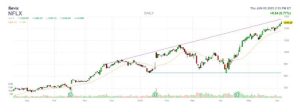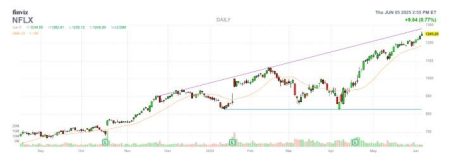In the current climate of post-election discussions, a common question among investors is whether we are witnessing a stock market bubble. Many seek a definitive indicator to determine when to exit a bull market, often relying on casual conversations at social gatherings for financial advice. However, effective investment decisions should be grounded in comprehensive analysis rather than fleeting opinions. Insights from financial history, as explored in my recently published book, “Investment Atlas III – Creating Wealth Using Historical Trends,” reveal that investors can utilize various analytical tools to assess the market’s health. Just as a doctor conducts tests during a physical exam, investors must utilize certain indicators to gauge the signaling of a bull market’s longevity.
As a seasoned market strategist and portfolio manager with over three decades of experience, I have developed a framework to evaluate market strength. Among the various analysis tools available, the 40-week moving average of major stock indices, in conjunction with the NYSE Advance/Decline Line (AD Line), has demonstrated efficacy in identifying significant market peaks throughout financial history, particularly in notable years such as 1929, 1973, 2000, 2007, and 2021. These tools serve as critical indicators that reveal potential shifts in market trends before they become apparent to the broader investing public.
The Advance/Decline Line measures the breadth of the market, specifically evaluating how many individual stocks on the New York Stock Exchange are moving higher compared to those that are declining. Unlike the S&P 500 Index, which weighs stocks by market capitalization, the AD Line treats all stocks equally. This distinction allows the AD Line to serve as a leading indicator, often forecasting changes in market direction several months ahead of broader indices such as the S&P 500 or the Dow Jones Industrial Average (DJIA).
To effectively utilize these investing tools, it is essential for investors to focus on overall market trends while considering specific stock selections. Moving averages and the AD Line act as technical trend indicators, providing insights into market health. An effective strategy involves observing whether these indicators align with market prices; when they diverge—indicating a potential shift in direction—a significant change in market sentiment may be imminent. Presently, indicators suggest the current bull market remains robust, as evidenced by upward movement without signs of weakening when compared to historical market tops.
Investors today should implement a dual strategy of offense and defense when creating wealth. Achieving investment success relies on establishing a disciplined plan that includes a clear performance goal, a logical asset allocation framework, a systematic monitoring process, and guidelines for rebalancing. Many advisors may advocate for a fully invested approach regardless of market conditions, but effective investment entails knowing when to adjust holdings. The key lies in executing a well-thought-out strategy that balances risk and opportunity, akin to military tactics or sporting strategies, where both offensive and defensive measures are critical for victory.
History teaches us that all bull markets eventually reach an end. Thus, it is prudent for investors to prepare for potential downturns during prosperous times, rather than being caught off guard. The notion of being perpetually invested in stocks without regard to market dynamics would likely be regarded with skepticism by seasoned investors of the past. By leveraging the lessons of financial history and being proactive in investment decisions, investors can position themselves to avoid the pitfalls of market exuberance and successfully navigate future uncertainties.










